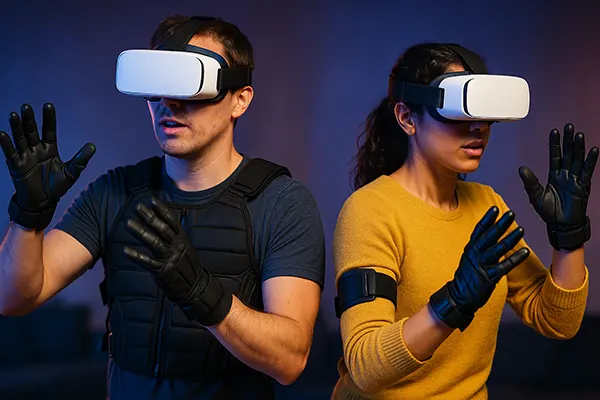
Development of VR Accessories with Synchronous Haptics for Cooperative Gaming
Virtual reality gaming has always aimed to increase immersion and connection between players, but the latest advances in haptic technology offer a new dimension of interaction. Synchronous haptic accessories are being designed to allow multiple players to physically feel each other’s movements in real time. This innovation carries the potential to transform cooperative gaming, making teamwork more tangible, intuitive, and effective than ever before.
The Technology Behind Synchronous Haptic Accessories
Haptic technology has already become a standard element in VR controllers, delivering vibrations or force feedback to simulate physical contact. What makes synchronous haptics unique is the ability to transmit one player’s movement to another in real time. When a teammate lifts, pushes, or gestures, others wearing the device receive the corresponding feedback instantly.
Modern prototypes use advanced actuators and wearable sensors embedded in gloves, vests, or armbands. These accessories translate digital signals into pressure, resistance, or subtle vibrations across different parts of the body. Unlike traditional single-player haptic gear, synchronous systems rely heavily on network optimisation, ensuring minimal latency so the physical responses match the in-game action without delay.
Research projects from leading universities and start-ups are demonstrating that this technology is not limited to basic force feedback. Developers are experimenting with complex patterns that mimic muscle tension, grip strength, and even the sensation of cooperative lifting, opening entirely new forms of gameplay design.
Challenges and Progress in Implementation
One of the primary technical obstacles is latency. To make cooperative play feel natural, feedback delays must remain under 20 milliseconds. Achieving this requires advanced wireless protocols, adaptive algorithms, and cloud synchronisation to maintain precision across distances. The rise of 5G and edge computing is helping developers overcome these issues.
Another challenge is ergonomic design. Accessories must remain lightweight and comfortable for extended play while providing strong enough feedback to feel convincing. Engineers are experimenting with new materials, such as soft robotics and flexible exoskeleton structures, to strike a balance between realism and comfort.
Finally, affordability and accessibility remain critical. While professional VR labs already use complex haptic suits, consumer adoption will depend on cost-effective production. Companies are focusing on modular devices, allowing players to choose between gloves, armbands, or full-body kits depending on budget and gameplay preference.
Potential Applications in Cooperative Gaming
The introduction of synchronous haptics creates opportunities for multiplayer experiences beyond traditional visual and audio coordination. Imagine two players physically passing a virtual object and both feeling its weight and resistance, or a team of four pushing a heavy gate together while experiencing shared strain.
In role-playing or survival games, these sensations can intensify realism by making collaboration essential. For example, two players carrying an injured teammate could physically feel the burden distributed across their accessories. This physical link adds strategic depth and makes communication more natural, as body movements carry as much meaning as verbal commands.
Another area of innovation is esports and competitive gaming. Training with synchronous haptics can sharpen reflexes and team coordination, as every player learns to respond to physical cues as well as digital signals. This could lead to a new genre of cooperative competitions where the synergy between players is measured not just by speed, but by physical synchronisation.
Influence on Multiplayer Game Design
Game developers will need to rethink mechanics to take full advantage of synchronous haptics. Instead of designing tasks that rely only on visual cues, they can create challenges that demand real physical cooperation. Examples include puzzles requiring players to apply balanced pressure on virtual levers or team-based combat where defensive formations provide tactile reinforcement.
The presence of shared sensations will also influence narrative design. Story-driven games could incorporate scenarios where trust and reliance on teammates are reinforced not only emotionally but physically. This shifts multiplayer storytelling towards a more embodied experience.
Moreover, this technology could bridge the gap between casual and professional gamers by providing a common ground of physical interaction. Developers might design scalable mechanics where basic vibrations enhance casual play, while advanced synchronised resistance supports competitive and high-intensity sessions.
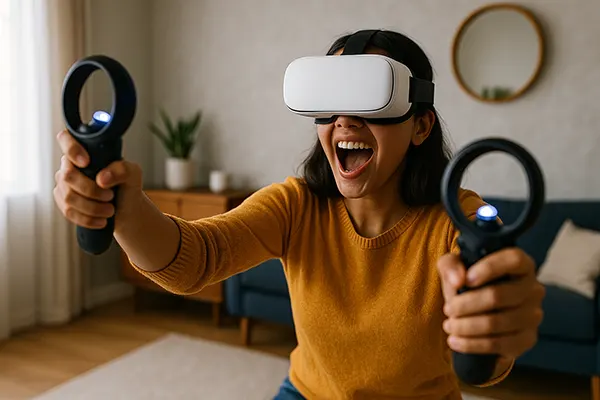
Future Outlook and Broader Impact
As synchronous haptic accessories become more refined, their influence will extend beyond entertainment. Cooperative VR applications in education, training, and healthcare can benefit from shared tactile experiences. For instance, medical students could simulate joint surgeries where each participant feels the precise force applied, or firefighters could rehearse carrying heavy equipment as a coordinated team.
The development of such technology also highlights ethical and safety considerations. Ensuring that haptic signals remain safe, non-intrusive, and adjustable for users with different sensitivities is crucial. Regulatory standards will likely evolve as adoption grows, creating frameworks for safe use in both consumer and professional contexts.
Overall, synchronous haptic VR accessories represent a significant step towards making virtual environments feel more social, physical, and authentic. By enabling players to literally feel each other’s presence, these devices could transform the way people collaborate in digital spaces, reinforcing both teamwork and human connection in the virtual age.
The Road Ahead for Developers
Looking forward, developers must balance technical ambition with practicality. Wide adoption will require partnerships between hardware manufacturers, software studios, and network providers to ensure a seamless ecosystem. Open standards for haptic communication could accelerate integration across different games and devices.
Furthermore, investment in cross-industry collaboration will drive progress. Beyond gaming companies, healthcare, defence, and industrial training sectors share an interest in shared haptics, making this an area ripe for joint research and funding. Such partnerships could reduce costs and speed up innovation.
Ultimately, the success of synchronous haptics will depend on user adoption. If players feel that the technology enhances immersion without being cumbersome, it could become as integral to VR as voice chat is today. The next decade may well see a shift from purely visual cooperation to deeply physical, tactile collaboration in virtual spaces.
Popular articles
-
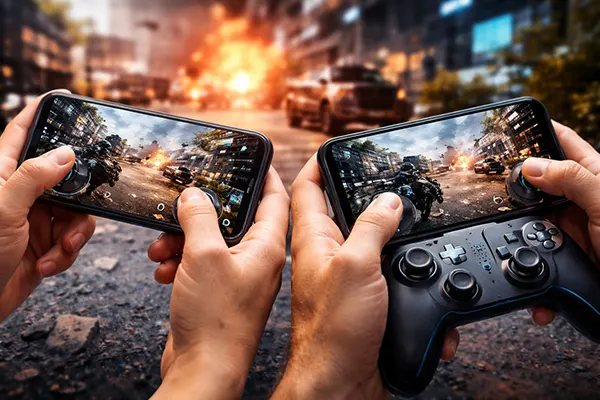 Touchscreens and Gesture Control in Mobile...
Touchscreens and Gesture Control in Mobile...Mobile gaming has changed fundamentally over the …
-
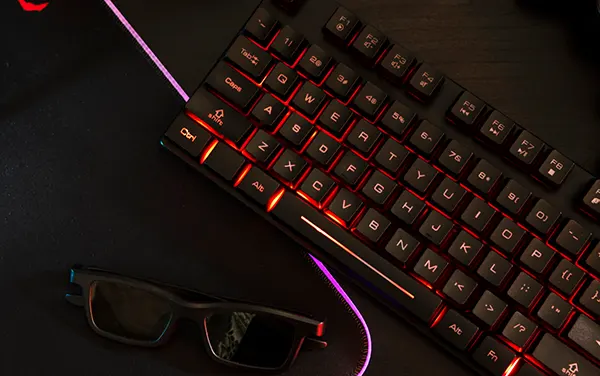 How Foot Keyboards and Pedal Controllers A...
How Foot Keyboards and Pedal Controllers A...Foot-based input devices have moved from experimental …
-
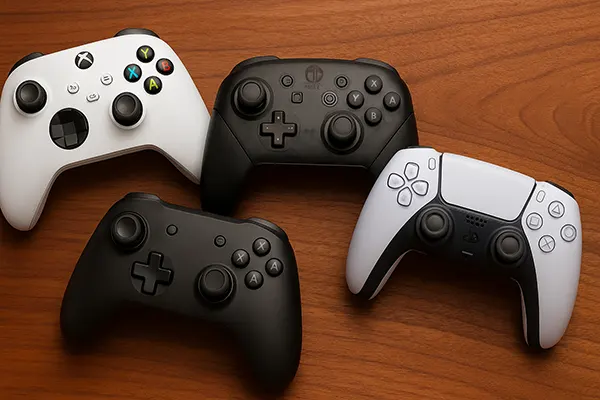 Evolution of PC and Console Controllers in...
Evolution of PC and Console Controllers in...The past two years have reshaped how …
